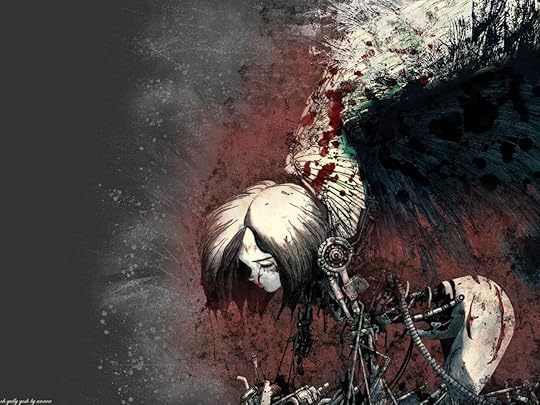What do you think?
Rate this book


32 pages, Paperback
First published April 1, 1986








If the first ones to come back had only returned with seashells, I doubt that Heaven [the space station] would be out here. Heaven was built after a dead Frenchman returned with a twelve-centimeter ring of magnetically coded steel locked in his cold hand, black parody of the lucky kid who wins the free ride on the merry-go-round. We may never find out where or how he got it, but that ring was the Rosetta stone for cancer. So now it's cargo cult time for the human race. We can pick things up out there that we might not stumble across in research in a thousand years. Charmian says we're like those poor suckers on their islands, who spend all their time building landing strips to make the big silver birds come back. Charmian says that contact with 'superior' civilizations is something you don't wish on your worst enemy.

Summary: William Gibson, Grandmaster of SF, published some 20 short stories in his long writing career since 1981. Half of them found their way into this 1986 collection. They are representative of his works in the 1980s given that three of them - Johnny Mnemonic, New Rose Hotel, and Burning Chrome - are set in his famous Sprawl universe. You know, the one he became famous with: Neuromancer (review).
Gibson set out to revolutionize the stale SF business, creating with a handful other authors a new subgenre known as Cyberpunk. Two of them, John Shirley and Bruce Sterling, can be found as co-authors here, adding to Gibson's special style.
Why would one want to read stories which were visionary at the time but nearly fourty years old now? True enough, Gibson coined the word "cyberspace" in the novelette Burning Chrome. His "matrix" and memorable, super cool fighting lady Molly Millions from "Johnny Mnemonic" were adapted in the 1999 action film "The Matrix" (just think of Trinity). But then again, this is 20 years ago. Add to this that Cyberpunk is way past its hype phase, Post-Cyberpunk anthologies are old again already, and one could ask: Why bother?
First of all, Gibson is a fantastic author, juggling techno language with real life sceneries like no one. Come here to read that, at least. Some of the stories, like Johny Mnemonic, Dogfight, or Burning Chrome, have fast-paced plots or draw interesting characters. There's something in it for everyone and there isn't a single bad story in it, they range from good to great, feeling both fresh and nostalgic at the same time.
In my humble opinion, this collection should be part of every SF library as a milestone of the genre.
See you at Chiba city, drinking a beer with Molly.
Contents (review links will lead you to my blog):

"Source Code" *****
"Johnny Mnemonic" *****
"The Gernsback Continuum" *****
"Fragments of a Hologram Rose" ***
"The Belonging Kind," with John Shirley *****
"Hinterlands" ****
"Red Star, Winter Orbit," with Bruce Sterling *****
"New Rose Hotel" *****
"The Winter Market" ***
"Dogfight," with Michael Swanwick *****
"Burning Chrome" *****